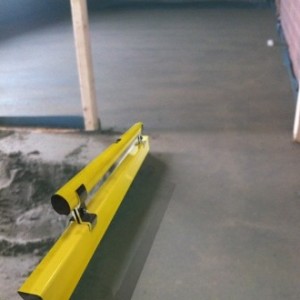 Traditionally floor screed is a mixture of sharp sand & cement mixed at a ratio of between 3 to 5 parts sand & 1 part cement depending on the requirements.
Traditionally floor screed is a mixture of sharp sand & cement mixed at a ratio of between 3 to 5 parts sand & 1 part cement depending on the requirements.
For the most part a ratio of 4 to 1 is sufficient for the most requirements, early applications used a reinforcement using a hex or chicken wire mesh, from the early 90’s fibers were added to the mix to replace the reinforcement mesh.
- Application
Floor screed is applied using a straight edge, which are available in wooden, plastic or metal. A smoothed finish may be acheived using a trowel or power float.
- Systems
There are three main systems for providing screeded floor solutions:- bonded, unbounded or floating
- Bonded
Bonded screed is achieved when a full contact is made between the concrete slab/substrate base floor and the top level screed. In order to achieve the bond it may be required to pre-treat the the base slab before laying the top layer of screed.
- Unbonded
Unbonded screed is achieved when there is no adhered connection between the screed and the concrete base, for example when a screed is layed over a damp proof membrane.
- Float
A floating screed is produced by applying a screed over the top of an insulation base.
- Bonded
UK Plastering Limited can either build your screeded floor to the specifications provided by your architect, or advise you on the best solution for the specific requirement you have.
UK Plastering Limited – Where experience counts …..
